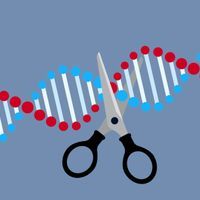ABOVE: © ISTOCK.COM, TRAFFIC_ANALYZER
The legal battle over the intellectual property surrounding CRISPR gene editing technology is not over. The US Court of Appeals for the Federal Circuit ruled last September that patents held by the Broad Institute of MIT and Harvard University were not in conflict with previously submitted patents from the University of California (UC), Berkeley. But the US Patent and Trademark Office (USPTO) has now posted documents declaring interference between them—meaning they may cover overlapping IP.
“Certainly, this new patent interference in the US adds to the complexity of the landscape,” Catherine Coombes, a patent director with HGF Limited in the UK who represents CRISPR patent holders in Europe, writes in an email to The Scientist.
The interference applies to 10 patent applications from the UC team and 13 patents and one application from the Broad. This time, the USPTO appears to focus on an...
See “Federal Court Sides with Broad in CRISPR Patent Dispute”
The Broad, based on work led by Feng Zhang, was awarded a foundational CRISPR patent that covers its use in eukaryotes back in 2014, but the UC team claimed that the development was an obvious extension of the work by Jennifer Doudna of UC Berkeley and colleagues in prokaryotes. The Broad lawyers, on the other hand, argued that such a feat was anything but obvious.
In February 2017, the USPTO’s Patent Trial and Appeal Board (PTAB) ruled that there was no interference. The UC team then appealed that decision, throwing the case over to the US Court of Appeals for the Federal Circuit, which upheld the PTAB’s decision last fall. Now, the USPTO has brought the case back, despite the fact that neither party requested it.
“Here we are again,” attorney Kevin Noonan of the Chicago law firm McDonnell Boehnen Hulbert & Berghoff LLP tells STAT. “I can only imagine that this will go on, and on, and on.”
See “Flux and Uncertainty in the CRISPR Patent Landscape”
Coombes notes the importance of putting these new proceedings in context. The current interference pertains only to the single-guide format of CRISPR-Cas9 technology, and Coombes says that other Cas proteins may ultimately prove to be the way forward for the clinic. “For human therapeutics, it is still too early to know where the key patents will lie.”
Interested in reading more?







